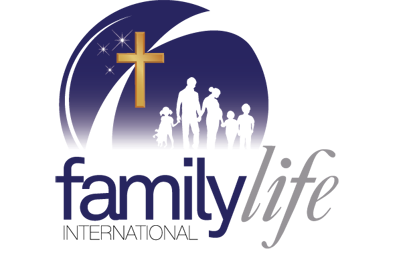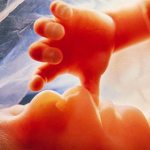David Bereit – Interview with Kathy Clubb on Monsignor Philip Reilly and how he influenced 40 Days for Life.
Hi David, it’s lovely to be here in Virginia with you. Can you tell me a little bit about how you came to meet Monsignor Reilly and the influence he had on you and 40 Days for Life?
The first I heard of Monsignor Reilly was when I left my job in the pharmaceutical industry, and had discerned the role of leading a local pro-life group in College Station, Texas. As I was in the process of leaving my professional career to do this, I called Joe Scheidler, who was partly responsible for getting me out of my professional work into the pro-life movement. I said “Joe, I don’t know what I’m doing. I don’t know what to do or how to do it.” He said “there are a few people I want you to meet.” I told him that a few weeks after that I was going to be going to New York City – my wife and I were just going for a vacation – and he said “while you’re there, there are two people you need to meet. One is Chris Slattery, who runs a chain of pregnancy care centres, and the other is Monsignor Reilly.”
So he described Monsignor Reilly and told me about his work with the Helpers of God’s Precious Infants, and his work with sidewalk counselling and the Helpers’ prayer vigils. So I reached out to Monsignor Reilly and he said to come on by.
We took the subway out to Brooklyn where he lives and spent the entire day with him. The first time we met he was sidewalk counselling as he does at the local abortion facility there, then we went back to the monastery where he lives.
He gave us a trash bag full of Helpers’ prayer booklets, cassettes (at the time), CDs, recordings of him doing sidewalk counselling training. And in one day, he just downloaded so much information to us.
So we went back to Texas, so inspired but also equipped with information about what to do and how to do it. We began implementing that as soon as I took over the Coalition for Life. We really ramped up the sidewalk counselling programmes. We adjusted out prayer presence very differently, based on the advice he had given us. We made sure that those who had come just to pray were not interfering with sidewalk counselling.
In the midst of this, we realised that he was really into something and we wished we could share with everybody else all we had got from Monsignor Reilly.
I asked him if there was any chance he could come to College Station, Texas, and he said he was actually going to be speaking at an event in Dallas, just three hours up the road. So we made it work.
He spent two days and the first night he did a sidewalk counselling training for those who were involved in that aspect of ministry. The next day we did a Helpers’ vigil where we processed through the town to the abortion facility and prayed together. Later that day we did a kind of call to action for everybody who had been at the vigil to get more involved in various pro-life efforts.
What I experienced with Monsignor Reilly during my time with him was number one: the man is so holy, so virtuous, so good, and I saw the love he has when interacting with everyone. Watching him interact with women at the abortion facility, watching him interact with those like me who were still apprehensive about being involved in the pro-life movement: he did it with such grace, with such love.
The other thing was, he really helped our community recognise how crucial the spiritual component was to the pro-life movement. We had been doing sidewalk counselling, but it was more just trying to offer help and not as much focussed on the spiritual dimension and we had people demonstrating but not as much of a prayer vigil prior to the Monsignor’s involvement.
So he helped us change the dynamic of all that, to being more of a prayerful presence and more of a place of support and compassion to the mums and to the children. It changed the whole dynamic of our community.
And here’s an anecdote: right at the beginning of our time together, maybe 2002, we we going back to drop him off to leave town, back home to New York and my wife was talking one on one with Monsignor Reilly and he told my wife that I was going to be Catholic one day. He said that I couldn’t be around this work and not end up Catholic.
He said, “Mark my words, it could take years but he’ll end up Catholic.”
His beautiful work inspired so many more people to do that same kind of work. Some of them, through that shorter starting point of a 40 Days for Life campaign, were then able to carry that through into a year-round effort.
So it’s almost like an introduction to regular sidewalk vigils. Tell me about how Monsignor Reilly’s influence came full circle:
Well, the young lady who started the organisation Coalition for Life, which birthed 40 Days for Life originally, is Lauren Goldie. Lauren was a Church secretary at Catholic campus ministry at Texas A & M, the St. Catherine Centre and when she heard that Planned Parenthood was opening an abortion facility in our town, she was the one who called a handful of friends and said that we’ve got to do something about this. She went, as part of her planning and learning in forming this organisation, to Dallas Texas and was trained in sidewalk counselling by a group called the Catholic Pro-life Committee, who, it turns out years earlier had been trained by Monsignor Reilly.
So she came back, not knowing that part of the story and brought elements of that to our town from the very beginning. So when she called the first meeting which my wife dragged me to and that formed what became the Coalition for Life, I had no idea that there was this connection that would trace back to Monsignor Reilly!
So Lauren did a beautiful job. She led that organisation. She founded it, she built it, that was in 1998. Planned Parenthood opened in 1999. In 2001 she had a child. And she was discerning staying home and raising her child and in the midst of this I was feeling a kind of stirring that I was supposed to do more and we had Joe Scheidler from Chicago in to speak at a banquet for us.
During his talk, Joe Scheidler said,
“I feel there’s somebody in this room who’s meant to do pro-life work full time.”
I was like, “How does he know to talk right to me?”
Two weeks later, I quit my job.
Years later, I told Joe Scheidler that on that night, he had been speaking to me.
He said, “I say that in almost every talk I ever do!”
I said, “Well that night was just for me, because I felt called to do that.”
So from Lauren bringing sidewalk counselling that Monsignor Reilly had taught people from Dallas, which she didn’t even know and Joe Scheidler then inviting people to do full time work, I left my job; then Joe Scheidler was my introduction to Monsignor Reilly. That just goes full circle!
Then when I was in Sydney and got to meet Paul Hanrahan there, I saw that the international impact of Monsignor Reilly’s work is profound.
So he’s really the common thread for so many of us?
Yes. I always think about the scripture, where two or three are gathered in my name, I am present there. Where in the world is He more urgently needed than these abortion facilities, where there’s so much hopelessness and despair?
And when we go out there to pray, to sidewalk counsel, to hold vigil, His presence there can be the most important thing to these mothers and to their children. It’s beautiful.
After he left, because of the change in the dynamic of the environment, he really had us much more focused on the spiritual aspects of this issue and also on the compassion and care we provided to those who were at the abortion facility.
We had done the demonstrations, the protests. Now we were shifting it more towards prayer vigils.
You were affiliated with the pregnancy centres?
Right. We had two pregnancy centres in town and we looked at it as our role to get people away from the abortion centre and take them to the pregnancy centre. So it wasn’t a formal affiliation, it was a partnership, where they appreciated us helping to bring clients to them and we appreciated that they were able to serve much deeper than we could on the sidewalk.
So that was the environment that Monsignor Reilly helped to change and it was in that environment in an hour of prayer in 2004 when I was running that organisation, the Coalition for Life, that I had three other staffers working for me and I called them to our little conference table in the office there and said, “we need to pray about what to do next.” Because clearly, we don’t know the next step. We don’t have Monsignor Reilly here all the time. And so during that hour of prayer, that was really when we felt the call to do what became 40 Days for Life.
Shortly after 40 Days for Life began to expand nationally in the United States, Monsignor Reilly told me that initially he was a bit sceptical, because we need people out there all the time. But the one thing we discovered was that having the shorter time frame to get people involved, then encourages them to keep going afterwards.
And it’s hard to say, “Well, come out until the place closes.”
Some people think this could be years and it may be, so it was really the inspiration, the spiritual formation we had and then that hour of prayer that became 40 Days for Life.
It was beautiful to see hundreds of people come out, not even knowing what we were going to kick off. We said that we have something we feel that God’s up to, we’re going to share it with you, we’re going to invite you to be a part of and from that night, the next day, the first 40 Days for Life kicked off and it was conducted through September 1st through October 10th. And that was in the year 2004.
So your first campaign wasn’t during Lent?
Correct.
How long between that and when the Unplanned real life events took place?
That happened in 2004, and Abby Johnson and the story of Unplanned happened in 2010. So it was 6 years – there were multiple campaigns that happened outside that facility. We did just that one local one, thinking that was it, then we began to work to spread it nationally then eventually internationally,
Can you tell us what you’re doing now that you’ve left 40 Days for Life?
Largely, I’m doing consulting work with a number of pro-life organisations. I’ve done work with Students for Life of America, the March for Life and for the National Institute of Family and Life Advocates and the Thomas More Society. A lot of my abilities are in helping with strategy, communication and ways of building numbers of people. So I help these groups to do a strategic assessment and say where we can be more effective. Many times, it’s not a case of what more to do, it’s a lot of times the things they should stop doing.
Sometimes we let the world dictate what we think is important. So is a social media presence more important than a presence at the abortion facility? No.
So helping groups to really assess what they do – not that they always listen to what I recommend – but with all the groups I work with there’s a lot of trust and an experience that we have together where they at least take the advice very seriously.
Sounds like you now have a unique perspective on the pro-life movement, David, first running your own organisation then seeing the insides of organisations that operate in an entirely different way from yours:
I’m sure you are aware – and I’m sure this is the case in Australia- there are rifts between leaders and groups, there are personality issues, there’s sin that happens between people. And because I’ve been able to work with so much of the movement, it’s put me in a position to be able to help bridge some of those divides. I’ve been able to bring groups together that previously weren’t working together; leaders that weren’t able to work together have been able to work through those issues. If we really view this as brothers and sisters in the Lord, then we have to find a way to work through those things.
When we let sin divide us and let the devil come between us, it’s tragic the kinds of things that pro-life leaders and organisations fall prey to. Ego, pride, money, all the ways that Satan tempts and corrupts many people.
David, could you just say a little about your conversion to the Catholic Faith?
Margaret and I had been praying a lot. We had intended to leave 40 Days and move immediately into a new apostolate and it didn’t materialise as quickly and in the way we expected. And so as a result of that – and in a beautiful way- It caused us to be on our knees a whole lot more. And instead of trying to tell God our will and say come bless it, we’ve been more seeking His will. This has been a real gift.
A kind of silver lining in the midst of this, is that while we had to be on our knees more, seeking His will, was that during that time I felt called to come into the Church. So had I rushed into a new project and started a new ministry, I may not have been listening.









